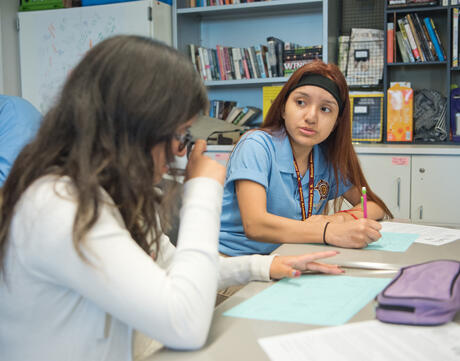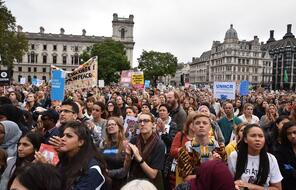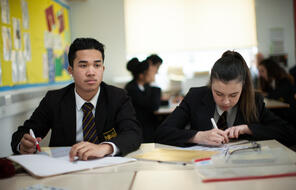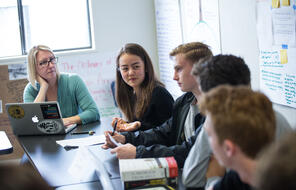
Who Are We?
At a Glance
Language
English — USSubject
- Civics & Citizenship
Grade
6Duration
One 50-min class period- Democracy & Civic Engagement
Overview
About This Lesson
Typically, a study of world history focuses on the identities of groups—cultures, communities, and civilizations—more than on the identities of particular individuals. Yet the same factors that influence the identities of individuals influence the identities of groups. Communities are influenced by physical attributes such as geography just as they are influenced by experiences such as war, plentiful harvests, or natural disasters. Communities are also shaped by the way they are defined by other groups. Thus the focus on individual identity in the first half of this unit provides a solid foundation for students’ exploration of communities in the rest of the unit (as well as throughout a world history course).
In this lesson, students begin to explore the concept of community by describing their class as a collection of people with unique identities. The activities in the lesson help students see the common characteristics that make them a group as well as the distinct qualities they each bring to their classroom community. As students study cultures throughout world history, remind them that although the individuals in these societies share a common identity, they (i.e., all Greeks or all Chinese) were not the same—just as the members of their class maintain distinct characteristics while being part of a class and larger school community. Balancing the desire to organize people into categories with the recognition that we are all unique individuals is an important skill that keeps people from relying on stereotypes.
Lesson Plans
Activities
Extension Activities
Materials and Downloads
Quick Downloads
Download the Files
Get Files Via Google
Who Are We?
What Aspects of Our Identities Do We Show to Others?
What is Community?
Unlimited Access to Learning. More Added Every Month.
Facing History & Ourselves is designed for educators who want to help students explore identity, think critically, grow emotionally, act ethically, and participate in civic life. It’s hard work, so we’ve developed some go-to professional learning opportunities to help you along the way.
Exploring ELA Text Selection with Julia Torres
On-Demand

Working for Justice, Equity and Civic Agency in Our Schools: A Conversation with Clint Smith
On-Demand

Centering Student Voices to Build Community and Agency
On-Demand














